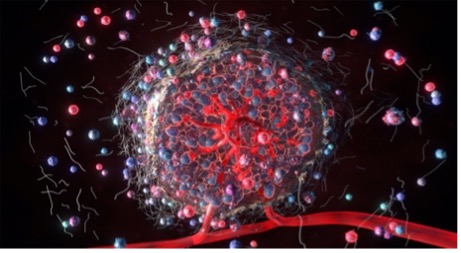Spatial Relationship of Immune and Epithelial Cells to Diagnose, Prognosticate and Predict Treatment Efficacy
TECHNOLOGY NUMBER: 2021-063

OVERVIEW
Spatial analysis of tumor microenvironments via multiplex immunohistochemistry
- Captures intercellular spatial relationships for comprehensive immune profiling
- Useful for cancer prognosis, therapy response prediction, tumor microenvironment research
BACKGROUND
The cancer microenvironment, a complex network of tumor cells, stromal cells, and immune cells, critically influences tumor progression and response to therapies. Traditional methods like standard immunohistochemistry and flow cytometry have been employed to characterize the immune infiltrate of tumors. However, these techniques have significant limitations. Immunohistochemistry is restricted by the number of antigens it can evaluate on a single tissue section, while flow cytometry analyzes cells in suspension, thereby losing valuable spatial information about cell-to-cell interactions. As such, there is a need for methodologies that retain spatial context while providing comprehensive immune profiling.
INNOVATION
Researchers have created a novel tyramide signal amplification (TSA) based multiplex immunohistochemistry (mIHC) technique capable of identifying up to nine unique antigens in situ. This innovation allows for the detailed characterization of multiple cell types within the tumor microenvironment while preserving their spatial relationships. The method has demonstrated the ability to prognosticate survival in patients with metastatic colon cancer through the analysis of intercellular distances and cell engagement. Complex spatial models developed using this technique can also predict immune-epithelial interactions, distinguishing malignant from benign pancreatic pathologies, and identify cellular relationships indicative of therapy response in non-small cell lung cancer. Real-world applications include enhanced cancer diagnosis, improved prognostic assessments, and refined strategies for individualized cancer therapies.